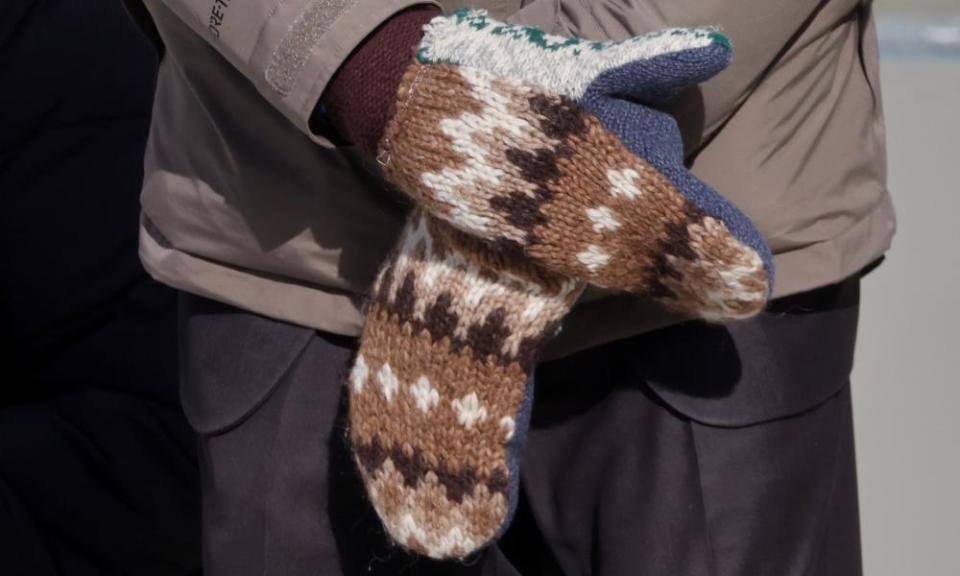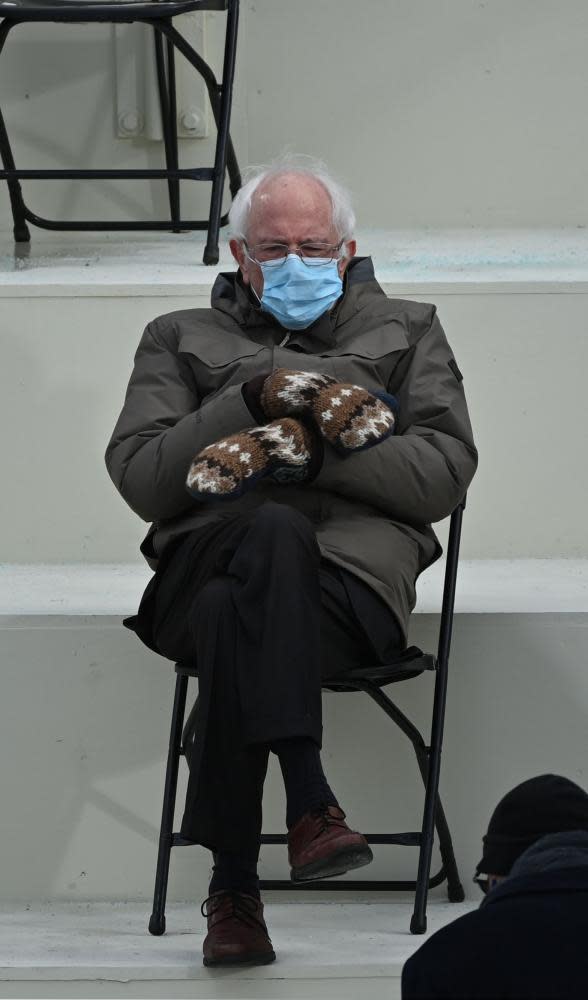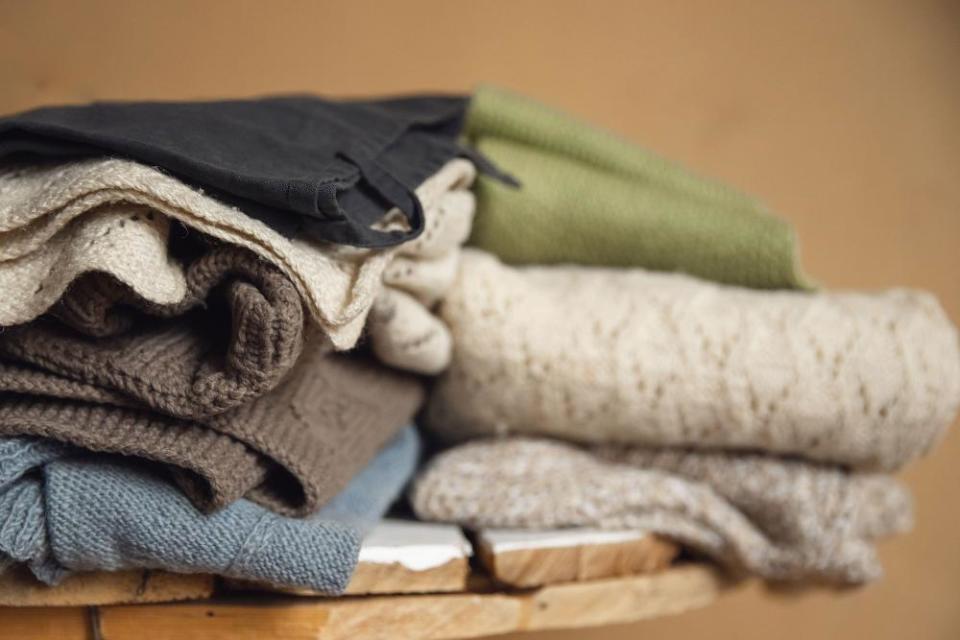How to make Bernie Sanders’ inauguration mittens

While it was Michelle Obama’s hair that brought the glamour to Joe Biden’s inauguration day, it was Bernie Sanders’ mittens that delivered the memes. Sitting at the event in a winter coat and mittens, arms and legs crossed, he was the yin to the rest of the Capitol’s sharp-suited yang – and promptly Photoshopped into Edward Hopper paintings, scenes from Glee and the vice-presidential debate, replacing the fly atop Mike Pence’s head.

It has been a welcome distraction in the world of knitting. “I’ve seen a lot of mittens in the last couple of days,” says Kate Atherley, the author of books including Knit Mitts. She has found it “utterly charming … it is just so desperately Bernie”.
Mittens by the original maker, Jen Ellis, are no longer on sale; the Vermont primary school teacher has pointed those looking to get their hands on a similar pair towards the multitude of small-scale crafters on the website Etsy. But what if you fancy trying to make them yourself?
Use shrunken knitwear
Although Sanders’ mittens have a hand-knitted aesthetic, they are not the product of knitting. In fact, they are made from repurposed sweaters, which Atherley describes as “a fantastic, indirect way of achieving the look of a hand-knitted mitten”. To make a pair as similar as possible as Sanders’, then, recycle a jumper.
If you are after extra-warm mittens, go for shrunken knitwear – jumpers that have been machine-washed in hot water might be too small to wear, but Atherley says they will make “for a warmer, denser mitten … if you live in Vermont, it’s recommended”.

Make a lining
For extra authenticity, you will need a lining. According to a tweet by Ellis, Sanders’ mitts are “lined with fleece (made from recycled plastic bottles)”. Atherley recommends a “flannel, fleece or even a sweatshirt-type fabric”. The lining is useful, she says, “because some people don’t like to have wool directly against their skin. Also it’s an extra layer.”
Take a piece of paper and lay your hand on it. Trace around it in a mitten shape, leaving a good 2-3 cm to allow for the seam. Cut out and pin the paper to your lining fabric. “Cut two of those for each hand and sew them together,” says Atherley. Be sure to leave the opening unsewn. Layla Totah, a London-based sewing teacher, recommends also leaving a gap of 8-12cm unsewn on one side – for reasons that will become clear.
Make the outer layer
Next, repeat the process, but with the wool. Atherley suggests tracing around your hand while wearing the lining layer, to make sure the mitten is bigger. Then, sew the outer layers of each hand together.
Stitch the layers together
Now that you have your lining layers and your outer layers, it is time to sew them together. Do this by placing the left-hand glove inside the left-hand lining, so that the mitten is inside-out. Repeat for the right hand. “Then sew the inner and outer layers of each side together,” says Atherley, being careful not to sew it shut. She recommends using whip stitch and thick cotton to sew the two layers together at the cuff.
An alternative ending
If you leave a gap in your lining, as Totah suggests, you will be able to turn the whole mitten through this hole, thus hiding all your stitching. “Sew up the gap and push the lining into the woollen mitten,” says Totah. If you would rather use a pattern, Totah recommends the Atlas Mitten.
The knitted version
If you choose to knit a version of Sanders’ mittens, be warned that this is not a task for newbies. Atherley compares the former method to making a cake from a box and the knitted solution to “a technical challenge in the last week of Bake Off”.
Use a thick yarn and a trusted pattern …
If it has struck you that Sanders’ mittens look like they could have been repurposed from Sarah Lund’s famous jumper, that is no coincidence. “The two homes of this technique are Scandinavia and Fair Isle, Shetland,” says Atherley. Because you are often working with multiple colours, making it extra thick, “it is popular in cold, draughty places”.
Atherley recommends the knits sold by a Shetland-based company called Jamieson & Smith, as well as Jamieson’s of Shetland and Lancashire-based Susan Crawford Vintage. The knitting instructor and author Tanis Gray recommends Ravelry, which has dozens of free patterns.
Gray also suggests using a worsted weight yarn. “There are eight weights of yarn, zero being like dental floss, seven being the width of your thumb,” she says. “Worsted is number four.” Armed with that, and a pattern, you are good to go.
… or keep it simple
If you feel out of your depth, try following an online tutorial. Atherley recommends Hazel Tindall – “one of the great living masters of this type of knitting” – and says there is “lots of good learning via her site”. Alternatively, you could try making mittens in a single colour. “They’re a small project and you can use thick yarn and learn relatively quickly,” says Atherley. “Using multiple colours is where it gets more complicated.”

